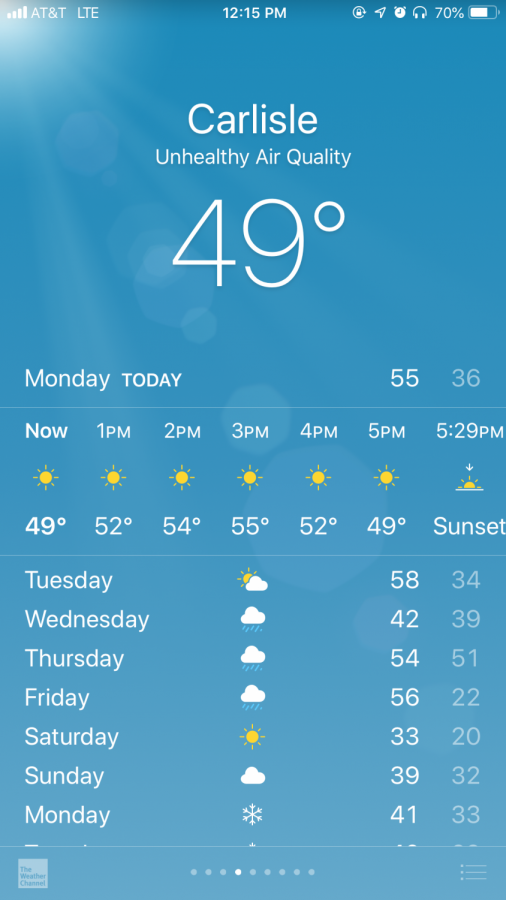Poor Air Quality Observed on Weather Apps
Over the past few weeks, students at Dickinson have noticed an “Unhealthy Air Quality for Sensitive Groups” or just “Unhealthy Air Quality” message appear in their weather apps, a notice of overall declining air quality across Cumberland County.
“At the base of this valley, you have a major interstate, Interstate 81,” stated Lindsey Lyons, assistant director of the Center for Sustainability Education (CSE) at Dickinson. “It’s a transportation headquarters here, and it is the increase in Diesel truck traffic due to warehousing and distribution in this area.”
“There will be periods where the air just kind of sits stagnant,” stated Neil Leary, director of CSE, in an article published by the Sentinel on Sept. 9, 2018, “…and as more emissions from vehicles go into the air, it’s not going anywhere… you get periods where it builds up to excessive levels.”
According to a July 18, 2018 article from Public Opinion Online, the Harrisburg-Carlisle metropolitan area “makes the nation’s top-10 list of cities with the most days of particle pollution.” The non-profit environmental advocacy group PennEnvironment found that in 2016, there were 132 days of either elevated smog or soot in Harrisburg-Carlisle.
That number was higher than in places such as the York-Hanover metro area with 128, and Gettysburg with 81, according to the report. Even the larger Pennsylvania cities of Philadelphia with 111 days and Pittsburgh with 121 days had lower figures.
Air quality is measured via the Air Quality Index (AQI), which can be found at airnow.gov. AQI measures ground-level ozone, particle pollution, carbon monoxide, sulfur dioxide and nitrogen. The website states that ground-level ozone and airborne particles “pose the greatest threat to human health in this country.” A scale from 0-500 is used for AQI, which spans six levels ranging from “Good” to “Hazardous.”
According to Maiko Arashiro, assistant professor of environmental studies, last week Dickinson was at the red level, the “Unhealthy” range, which caused warnings to appear on weather apps. Low levels of wind and higher levels of commuting may have contributed to the “haze” that was in the air on Monday, Feb. 4.







Sam • Feb 14, 2019 at 2:59 pm
Is the school planning to address the air quality issue in any way? The article doesn’t mention this.